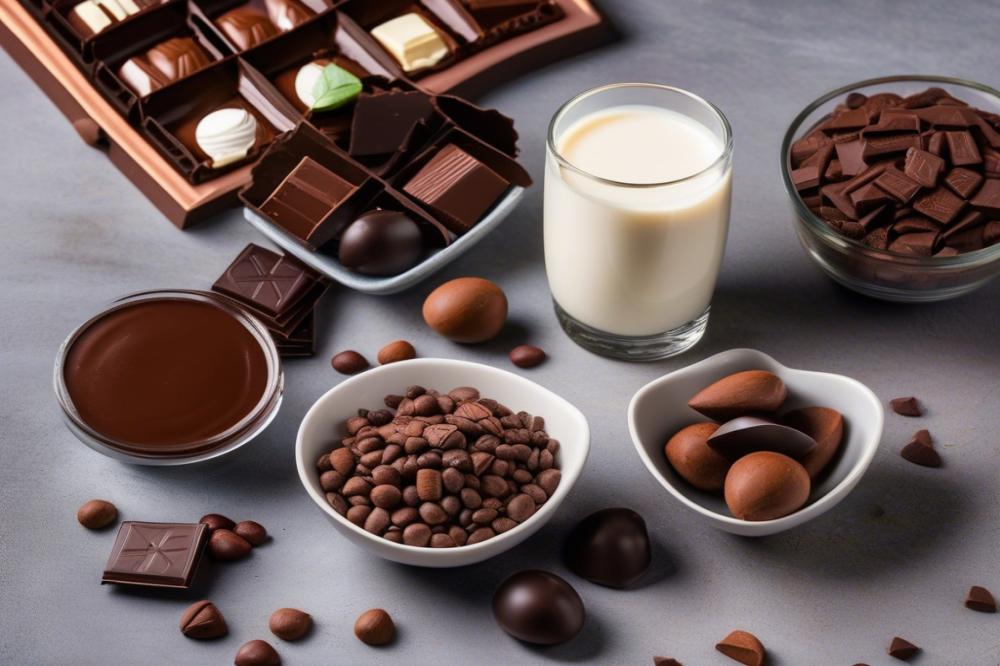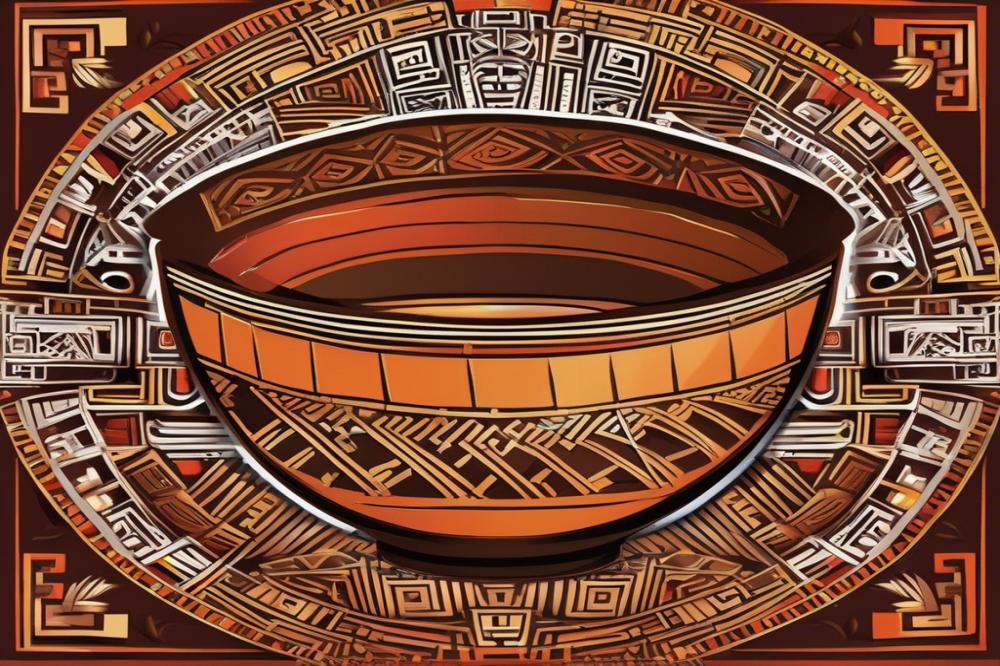Introduction
Chocolate has played a significant role in culinary history. Its journey from ancient Mesoamerica to European tables is fascinating. Initially enjoyed as a bitter drink, it evolved into the sweet treats we adore today. The development of chocolate recipes opened up a world of flavors, capturing the hearts of many.
Among the various forms of chocolate, one creation stands out: milk chocolate. Its creamy texture and delightful sweetness are beloved by chocolate lovers everywhere. The origins of this treat trace back to Switzerland, where talented chocolate makers began experimenting with new ideas. Swiss innovation led to a major transformation in the industry.
Key figures in this journey were Henri Nestlé and Daniel Peter. They worked together to create a new recipe that combined milk powder with chocolate. This collaboration not only changed how confectionery was produced but also set the stage for modern chocolate manufacturing. Their efforts spurred a new era in chocolate production, making it accessible to many.
Today, chocolate remains a cherished sweet confection across Europe and beyond. The creativity of Swiss chocolate makers continues to influence the industry. Understanding the history of chocolate helps appreciate its significance even more.
The history of chocolate

The story of chocolate dates back to ancient civilizations like the Aztecs and Mayans. These cultures used cacao beans to create a bitter drink. It was often flavored with spices or honey, giving it a unique taste. The drink was reserved for special occasions and was believed to have magical properties. Early on, chocolate was quite different from what we enjoy today.
Over time, the perception of chocolate began to shift. When it reached Europe, people transformed the bitter beverage into a sweeter delight. Innovations in chocolate recipes allowed for the addition of sugar and milk, enhancing the flavor significantly. This change marked the beginning of chocolate’s journey toward becoming a beloved treat in confectionery worldwide.
European chocolate played a pivotal role in shaping modern preferences. With the growth of chocolate production in the 19th century, more people had access to these sweet confections. Swiss chocolate makers, in particular, emerged as leaders in this endeavor. They were instrumental in refining techniques to create smoother, creamier chocolate. Names like Henri Nestlé and Daniel Peter came to the forefront during this time. Their collaboration ultimately led to the invention of milk chocolate, which became a sensation.
The techniques developed by early chocolatiers laid the groundwork for the chocolate manufacturing processes we see today. Chocolate bars and other treats started to gain popularity. As people began to enjoy chocolate as a snack or dessert, its status shifted from a luxurious drink to an everyday delight. This transformation continues to influence chocolate lovers around the globe.
The Emergence of Milk Chocolate

The history of chocolate is rich and fascinating. Originally, chocolate was consumed as a bitter beverage by ancient civilizations. It wasn’t until the 19th century that confectionery makers began experimenting with new recipes. Sweet treats were evolving rapidly, and the concept of solid chocolate was gaining traction across Europe.
In this era of innovation, Swiss chocolate makers began to stand out. Henri Nestlé, a forward-thinking entrepreneur, played a key role in this transformation. He developed a method to create a creamy milk powder that would change chocolate forever. His collaboration with Daniel Peter, a local chocolatier, sparked a breakthrough idea. They believed that adding Nestlé’s milk powder to chocolate could yield a delightful new product.
Their partnership led to the first successful creation of a unique sweet confection that blended rich chocolate with the smoothness of milk. This discovery captivated the taste buds of many and marked a significant moment in chocolate production. The public’s response was overwhelmingly positive, paving the way for a new trend in confectionery.
The industrial revolution significantly impacted how chocolate was made. Advances in technology allowed for mass production, making chocolate more accessible to the general public. Factories sprang up, and European chocolate became widely available. The combination of improved machinery and innovative recipes brought chocolate treats into homes across the continent.
As a result, milk chocolate became a beloved favorite. The innovation brought forth by Nestlé and Peter set a new standard for the industry. Chocolate manufacturing was now faster and more efficient, which only increased its popularity. Soon, every corner of Europe wanted to indulge in this creamy delight.
Ultimately, the emergence of milk chocolate not only enriched the world of sweets but also laid the foundation for a thriving chocolate industry. It demonstrated how collaboration and creativity could transform traditional recipes into something wonderfully new.
Key Swiss Chocolate Makers

Profile of Henri Nestlé’s Contributions to Milk Chocolate
Henri Nestlé was a visionary in chocolate production. Born in Germany, he later settled in Switzerland, where he started a company that would change the confectionery landscape forever. In the 1860s, he introduced a sweet recipe that combined milk and cocoa. This innovation led to the birth of milk chocolate. Nestlé’s approach was unique at the time, bringing together solid chocolate and cream. By doing so, he made chocolate products more appealing to a broader audience. Children, in particular, loved the creaminess. His influence can still be felt today in the vast range of chocolate products that bear his name.
Discussion of Daniel Peter’s Role in Developing Milk Chocolate
Daniel Peter was another key figure in the world of Swiss chocolate makers. He partnered with Nestlé, which was a significant move in the history of chocolate. Peter had experimented with cocoa powder and was determined to find a way to make chocolate more palatable. This quest led him to add milk powder, a method inspired by Nestlé. The first successful batch of milk chocolate emerged in 1875. It was a thrilling moment for both men. Their collaboration combined historical chocolate techniques with an innovative twist. The result? A product that set the stage for the future of chocolate manufacturing.
Impact of Swiss Chocolate Makers on Global Confectionery
The contributions of Swiss chocolate makers reshaped the global landscape of sweet confections. While European chocolate history showcases many traditions, the Swiss brought something new to the table. They elevated chocolate recipes that focused on quality and smooth texture. This focus quickly gained popularity not just in Switzerland, but worldwide. Today, brands like Toblerone and Lindt continue to thrive, thanks to their rich heritage. The legacy of Peter and Nestlé endures through countless chocolate bars enjoyed across continents. Swiss ingenuity transformed chocolate from a simple treat into a beloved global phenomenon. This impact continues to influence modern chocolate production strategies.
The Manufacturing Process of Milk Chocolate

Overview of Chocolate Production Techniques
Chocolate production begins with cocoa beans. These beans are harvested from cacao trees. After picking, they undergo fermentation. This process enhances their flavor. Next, the beans are dried and roasted. Roasting brings out the rich chocolate aroma we love. Once roasted, the shells are removed, revealing the nibs inside. Grinding these nibs creates chocolate liquor. This is essential for chocolate manufacturing.
Chocolate makers mix this liquor with sugar and other ingredients. The amount of cocoa solids used can vary greatly. This is where the magic begins. Different combinations lead to a wide variety of flavors and textures. Confectionery experts play a huge role. They experiment to find the perfect blend for consumers.
Role of Milk in Chocolate Recipes and Textures
Milk is a game-changer in the world of chocolate. It gives a creamy texture that sets it apart. Swiss chocolate makers, like Henri Nestlé and Daniel Peter, pioneered this idea. They combined milk powder with chocolate liquor. This innovation made a sweeter and smoother treat. The addition of milk alters the recipes significantly. It enhances the mouthfeel and creates a rich taste.
The choice of milk can affect flavor too. Whole milk powder delivers a different experience than skim. Furthermore, the Fat content adds to the texture. For chocolate lovers, this creaminess is irresistible. Every bite melts in your mouth, demonstrating the care put into the process.
Comparison of Milk Chocolate and Dark Chocolate Production
When comparing milk chocolate and dark chocolate, there are clear differences. Dark chocolate contains more cocoa solids and less sugar. This results in a bolder flavor. In contrast, the creaminess of milk chocolate comes from the milk. The sugar levels are typically higher in milk chocolate recipes. This makes it smoother and sweeter.
The production of dark chocolate focuses on preserving the pure cocoa taste. Swiss chocolate makers have mastered both types. They adapt their methods for each product. Machines for grinding may work differently based on the final goal. Each batch is a reflection of careful craftsmanship.
Understanding these variations in chocolate production helps appreciate the final product. Every flavor and texture has a story, rooted in the history of chocolate. By celebrating milk chocolate’s sweet legacy, we recognize the innovation that Swiss chocolate makers brought to the world.
The Legacy of Swiss Milk Chocolate
The history of chocolate took a remarkable turn when Swiss innovators introduced a new style that would captivate taste buds everywhere. It was the combination of rich chocolate production and creamy milk that sparked a revolution. Swiss chocolate makers like Daniel Peter and Henri Nestlé played crucial roles in this transformation. Their collaboration resulted in delicious recipes that forever changed how people enjoy confectionery.
How Milk Chocolate Changed the Chocolate Market
This innovation opened up new possibilities in the chocolate market. Previously, dark chocolate dominated, but now sweetness and creaminess gained popularity. The introduction of milk into the mix created more options for consumers. Customers began to seek out these sweeter alternatives. Sales skyrocketed, and chocolate manufacturing saw an increase in demand.
Impact on European Chocolate Culture and Beyond
Europe embraced this new style, and soon, it wasn’t just a Swiss delight. Many countries incorporated milk chocolate into their traditions. Chocolate shops began to offer various blends and forms. This shift influenced the entire chocolate culture across the continent. Celebrations and holidays became even sweeter with this delightful treat.
Modern Adaptations and Trends in Milk Chocolate
Today, the legacy of milk chocolate continues with many modern adaptations. Various brands experiment with flavors and ingredients, creating exciting products. Unique combinations, such as sea salt or spices, have entered the market. Health-conscious consumers also see lighter options evolving. Artisanal creations are now found alongside mass-produced candies to satisfy diverse preferences.
This delicious product is still a staple in the world of sweet confection. With every bite, it carries the legacy of those early Swiss innovators who dared to mix milk with chocolate. The impact of their work lingers, shaping how chocolate is enjoyed even today. No longer just a luxury, milk chocolate has become a familiar part of everyday life for many.
Final Thoughts on Swiss innovation and the Legacy of Milk Chocolate
Let’s recap the fascinating origins and evolution of milk chocolate. The journey started in the 19th century when Swiss pioneers like Daniel Peter combined cocoa with milk. This groundbreaking idea transformed a bitter treat into something delightful and creamy that we cherish today.
Swiss innovation played a remarkable role in the history of chocolate. Their dedication to quality and craftsmanship set the stage for modern chocolate production. The perfect blend of technique and taste led to the creation of a beloved dessert that continues to enchant people around the world.
As we reflect on this sweet development, it’s essential to appreciate the rich heritage that comes with every bite. The process of making chocolate is steeped in tradition and has evolved significantly over the years. Each piece carries a story, a connection to the past, and a hint of excitement for the future.
So, next time you savor this delightful treat, think about the journey it took to reach your palate. Embrace the traditions and innovations that have shaped it. This special dessert is more than just a snack; it’s a testament to creativity and progress in the world of sweets.



